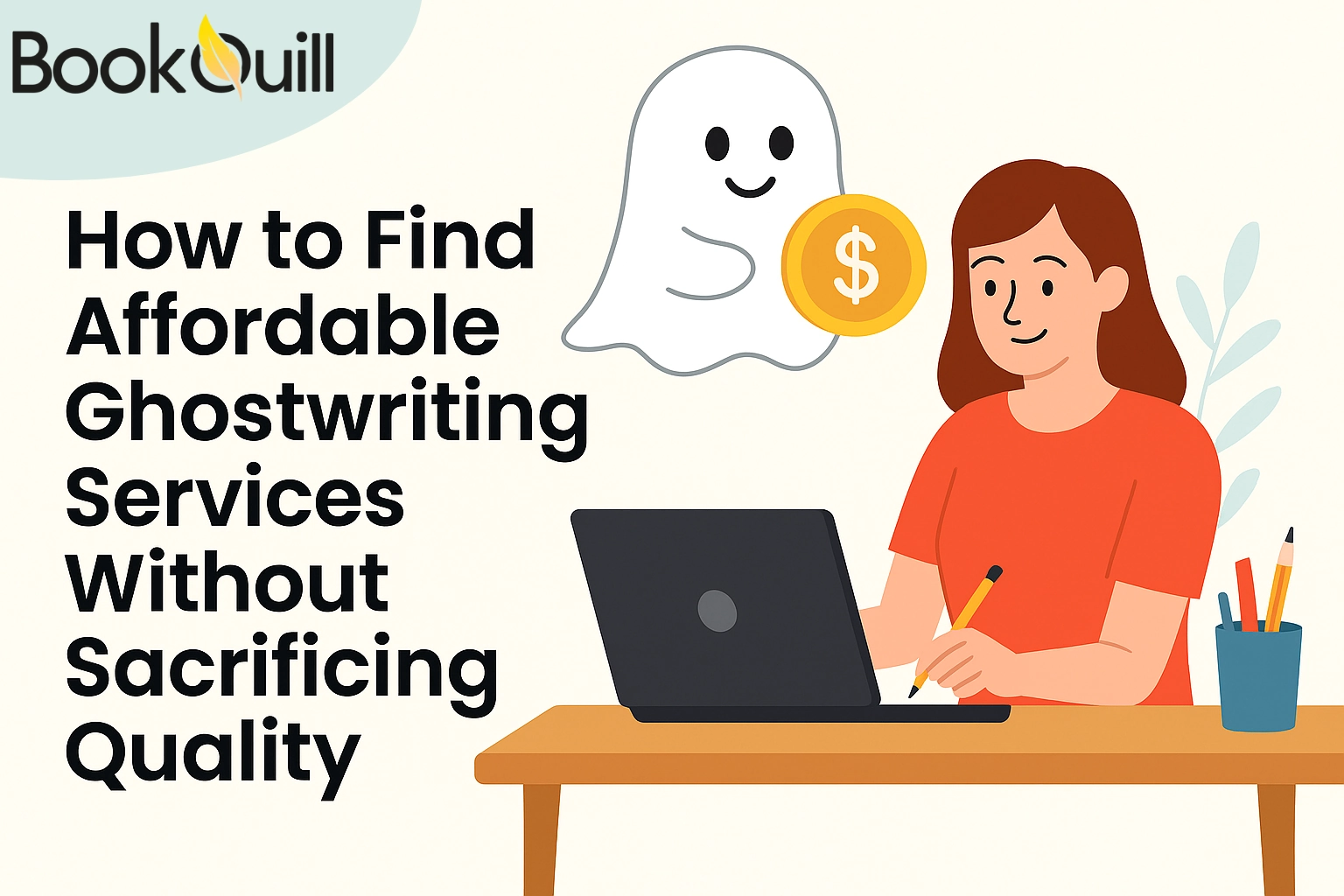Table of Contents
Explore Blogs
Trending on Ebook
How to Start Writing Your Book

Have you been told that you are great with words, and has it encouraged you to write your own book? You have love and confidence from friends and family, as well as resources, but are you struggling with thoughts like “I want to write a book, but where do I start? Don’t worry we are here to help you out.
Why Do You Want to Write a Book?
First things first: why do you want to write a book? Is it a story that’s been bubbling up inside your mind for years? Maybe you want to share your knowledge or experiences? Whatever it is, this guide can help you write.
How to begin?
How should I write book chapters? How long should they be? Is it important to draft ideas first, or should I just start writing whatever comes into my mind? Are these questions stopping you from writing or making you think, “Should I even write this book?” well, it’s normal. Before you start writing, follow a pattern. It will not only keep you on track but also make everything easier for you to manage. In this guide, we will help you address all of these questions and simplify your writing process by offering actionable and easy tips to follow.
Read as Much as You Can
Reading books in your preferred genre can provide new ideas and perspectives. It can also help you understand what works and what doesn’t for your book.
Listen to Music
Listening to music, especially songs by your favorite artists, can help inspire you when starting to write a book. Songs are created with deep thinking and emotion, and they often tell stories. They will evoke strong feelings in you, which can help you write.
Reflect on Personal Experiences
Take inspiration from your life experiences. Think about events that you enjoyed, challenges you’ve overcome, or lessons you’ve learned. These can be powerful sources of inspiration for your writing.
Brainstorm Ideas
Set aside time for brainstorming. Write down any ideas that come to mind, no matter how minor or irrelevant they may seem. You can later refine these ideas into better themes and plots.
Engage with Others
Talk to friends, family, or colleagues about your ideas. Their feedback and perspectives can provide valuable insights and help you see your ideas in a new light or you can also use professional book writing services.
Set Writing Goals
Making goals that are hard to achieve can sap your motivation. Instead, set achievable writing goals to avoid frustration. Whether it’s setting a daily word count or a timeline for completing chapters, break down the writing process into easy, small steps and set deadlines for each stage to stay organized and motivated.
For example, if you’re wondering how to write a book , create a clear plan, estimate word count, and set specific targets for each day.
Select the Genre
Well, just picking up a pen and starting writing is not what you call writing. It requires creative thinking, but before that, you should know what you are writing about. Is it a mystery, a romance, or something adventurous? Picking a genre helps give your book direction. Meanwhile, don’t forget about your readers when you find a direction. Who are they? What do they like? Understanding your audience can influence your approach to writing a book with no experience, ensuring it resonates with the right readers.
Develop Your Book Idea
Got your inspiration and genre? Great! Now, pin down your book idea. Start brainstorming. Jot down anything and everything that comes to mind. What’s the core premise? It is the foundation of your story. It’s what makes your story unique and different from others. If you feel like your ideas are not attention-grabbing, try using ChatGPT for assistance. Once you capture your audience’s attention with your story, nothing can prevent it from becoming popular.
The next step is to identify the main idea or concept that drives your story. It could be a unique twist on a common theme, an unusual story ending, or a fictional character. For instance, if you’re writing a suspense thriller story, it will start with a man seemingly connected to a murder in his past. Initially portrayed as guilty, the twist reveals his innocence, with the actual culprit being a woman who looks innocent. Clearly defining your core premise helps you stay focused and make every part of your book align with the main idea.
Plan and Outline Your Book
This can save you a ton of headaches later on. If you have time, make detailed outlines, and if not, write a few bullet points. An outline is a roadmap for what to write and how long a book will get. It helps you organize your thoughts and structure your content in a chronological way. Think about your story’s structure – how it starts, what happens in the middle, and how it all wraps up.
Conduct Research for Both – Fictional and Non-Fictional Writing
Research is a must step for the writing process, especially if you’re writing non-fiction. Gather relevant information about the topic you’re writing, facts and myths that people don’t know, and other data to support your ideas. Find credible sources and cover the trendiest things. For fiction writers, doing research can help in creating a believable imaginary world for readers even after they finish the book.
Create Memorable Characters
You may have seen people in the get-up of Spider-Man at the theatre. That’s the fever of character people catch from the story. Make your story real; give it depth. What’s their background? How did a villain become a villain? What past traumas made a human turn into a monster, and now what do they want? To destroy the world or get possession of the world.
Pick the flaws from where this character will be punished by spending some time getting to know your characters. They’ll drive your plot and keep readers hooked till the end.
What Tone of Voice Should Be Used Throughout the Book?
When writing a book, the tone of voice you choose can significantly impact how your readers engage with your story and characters. Here are some key points to consider when deciding on the tone of voice for your book:
Fiction Genres
- Mystery/Thriller – Suspenseful, tense, and sometimes dark. Aim to keep readers on the edge of their seats.
- Romance – Warm, emotional, and often intimate. The tone should make readers feel the emotions of love and heartache.
- Fantasy/Science Fiction – Imaginative, detailed, and sometimes epic. The tone can vary from light-hearted and adventurous to serious and complex.
Non-Fiction Genres
- Self-Help – Encouraging, supportive, and motivational. Readers should feel guided and uplifted.
- Historical – Informative, respectful, and engaging. The tone should bring the past to life while maintaining accuracy.
Consider Your Audience
- Young Adult (YA) – Casual, relatable, and often reflective of teenage experiences and language
- Children’s Books – Simple, fun, and engaging. The tone should be appropriate for the age group, whether it’s playful for young kids or more serious for older children.
- Adult Fiction/Non-Fiction – Depending on the sub-genre, the tone can range from formal and academic to conversational and informal.
Align with Your Purpose
- Entertain – Light-hearted, humorous, or thrilling, depending on the type of entertainment.
- Inform – Clear, concise, and authoritative. The tone should establish you as a credible source.
- Inspire – Positive, uplifting, and motivational. The tone should encourage and empower readers.
Stay True and Consistent with Your Voice
Write in a tone that feels natural to you, as it will come across as more genuine and engaging to your readers. Maintain a consistent tone throughout your book. Shifting tones can confuse readers and disrupt the flow of your story.
When to Use First-, Second-, and Third-Person Point of View (POV) in Your Book
This impacts how your story is told and how readers connect with your characters. Here’s how you can decide between first-person, second-person, and third-person POV:
First-Person Point of View
The storyteller is a character within the story, often the protagonist. Uses pronouns like “I,” “me,” “my,” and “we.” If you want readers to experience the story intimately through the eyes of the protagonist, first-person POV is ideal. It’s basically a front-row seat to the action as it helps readers understand the character’s thoughts, feelings, and motivations. This POV works well when the storyteller has a strong, distinctive voice or personality that adds flavor to the story. To create a sense of mystery or ambiguity, a first-person storyteller who is unreliable or biased can add an interesting layer to the story. You must have noticed this in The Hunger Games by Suzanne Collins.
Second-Person Point of View
The storyteller addresses the reader directly using the pronoun “you.” Second-person POV can make the reader feel like they are part of the story. This POV is often used in experimental or avant-garde writing, where breaking the fourth wall and engaging the reader directly is desired. It is commonly used in interactive fiction or “choose your own adventure” stories, where the reader makes decisions that affect the outcome of the story. Bright Lights, Big City by Jay McInerney is one of those books that pulls you right in, and it’s written in second-person POV.
Third-Person Point of View
The storyteller is outside the story, describing events and characters using pronouns like “he,” “she,” “it,” “they,” and “them.” Third-person POV offers the most flexibility in storytelling. You can zoom in on different characters’ perspectives (third-person limited) or provide an all-knowing view of the story and characters (third-person omniscient).
If your story requires multiple character perspectives or a broader scope, a third-person POV is ideal. This POV can provide a more objective viewpoint, allowing readers to see the bigger picture without being influenced by a single character’s perspective. Harry Potter series by J.K. Rowling is a book that’s third-person limited, and reading it can be helpful to those who are describing their book’s characters in the third person.
Write Your First Draft
You might be thinking how hard it is to write a book, but nothing will sound impossible if you know how to write your first draft. Firstly, find a quiet and comfortable space where you can sit and write your thoughts and ideas without distractions. Then, personalize this space with items that inspire creativity, like favorite books, artwork, or motivational quotes.
Once you have your space set up, make a consistent writing routine that suits your schedule and productivity peaks, like writing for an hour every morning or dedicating specific days of the week to writing; whatever works for you, stick to it. To develop momentum and clarity, you should write daily; it will be easier for you to translate your thoughts into words on the page. Remember, the first draft doesn’t have to be perfect—its purpose is to capture your ideas and lay the basis for refining and polishing your work in the following drafts.
Tips to Overcome Writer’s Block
Writer’s block can be a common hurdle, but it’s important not to let it slow down your progress. Here are some strategies to overcome writer’s block:
- Take short breaks to freshen up your mind.
- Write freely without worrying about grammar or structure.
- Switch your place of writing.
- Read books, movies, or nature for a change.
How to Write the Title of Your Book
Some writers decide on the title of their book before they even start writing, but if you’re stumped for a title, it’s totally fine to name your book at the end. Why is this better? Because once you’ve written the whole story, you have a clear picture of what it’s all about. You know the themes, the characters, and the journey your readers will take. This can inspire you to get a title that truly reflects your story. Plus, it saves you the headache of possibly changing it later if it doesn’t quite fit.
Revising and Editing
Learning how to write a book from scratch and actually writing it can be exhausting. Remember, you can’t publish your book before editing. Since the writing task might have drained your brain, it’s best to take a break, perhaps even a whole day. This break will help you return to your manuscript with fresh eyes and a new perspective.
Self-Editing
Begin the editing process by reviewing your manuscript for structural and content issues. Look for inconsistencies, plot holes, and areas that need clarification. Ensure your ideas flow logically and that your writing is attention-grabbing. Pay attention to grammar, punctuation, and spelling errors.
Feedback
Feedback from others can provide valuable insights and help you improve your manuscript. Share your book with trusted friends, family members, or writing groups so that they can suggest something to add or delete that is irrelevant. You can also hire a professional editor for a more thorough review.
Can You Write a Book in 30 Days?
Yes, you can absolutely write a book in 30 days! But let’s be real—doing it all by yourself is a huge challenge. If you want to complete your book in a month, get help from AI. Artificial intelligence software can help you brainstorm ideas, organize your thoughts, and even generate text based on your prompts. Consider AI as your writing buddy who never gets tired or runs out of creativity. It can help you outline your book, suggest improvements, and keep you on track. With AI, you’re not just speeding up the process; you’re also enhancing the quality of your work.
How to Write a Book with ChatGPT
First, start by picking the right AI writing tool that suits your needs. You’ll want one that’s user-friendly and versatile, such as ChatGPT. Next, outline your book—use the AI to brainstorm chapter ideas and plot points. When you start writing, let the AI generate text based on your prompts. Don’t worry about perfection; you can always fix it later.
Use the AI to edit and polish your drafts. It can suggest better word choices, fix grammar, and even change the tone and style. Fact-check every piece of information in your book. AI can sometimes generate incorrect or misleading content. Proofread with attention to catch any errors or awkward phrasing. That’s how to use ChatGPT to write a book and keep these things in mind while using other writing tools, too. This way, you can write a book within a month.
What are Some Things to Avoid While Using AI’s Help for Book Writing?
While writing a book in a month might spark your interest, remember that overindulgence in anything is harmful. Here is a short list of things to avoid when using AI for book writing.
Over-Reliance on AI
First things first, don’t copy everything that AI generates. AI can help you brainstorm, outline, and even generate text, but your unique voice and creativity are irreplaceable. Your readers want to hear you, not a robot. So, use AI as a tool to learn how to write a book or get an idea on it, not as a writer.
Ignoring the Editing Process
AI can generate content, but it’s not perfect. There will be errors, awkward phrases, and sometimes just plain nonsense. Always go through and edit what the AI produces to maintain quality and consistency in your writing.
Skipping the Fact-Checking
One big no-no is assuming everything the AI writes is accurate. AI can make mistakes, especially with facts and data. Always fact-check the information and ensure it’s correct and relevant. Your credibility depends on it.
Losing Your Personal Touch
While AI can help generate ideas and content, don’t let it remove your personality from your writing. Use your personal stories, humor, and style in the book. This makes your work relatable and engaging.
Neglecting the Audience
Remember who you’re writing for. AI can produce generic content, but it might not always align with what your specific audience wants. Keep your readers in mind and change the AI-generated content to suit their preferences and expectations.
Forgetting to Backup Work
Technology isn’t infallible. Always back up your work regularly. You don’t want to lose your precious content due to a technical glitch or AI failure. Save your drafts in multiple places to be safe.
Preparing for Publication
There are several paths to getting your book published. Before you visit any publisher, learn the options so that you don’t stay blank in front of them:
Ordinary Publishing
It involves submitting your manuscript to publishing houses. If accepted, the publisher will handle editing, design, marketing, and distribution. While this route can be inexpensive, it gives the advantage of professional support and wider distribution.
Self-Publishing
Some might say that you can’t publish a book for yourself and that you need a publisher to do that. Well, that’s not true. You can self-publish to have complete control over the publishing process. You can publish your book digitally or in print through different platforms.
Self-publishing requires you to handle editing, design, marketing, and distribution, but it allows for greater creative freedom and higher royalty rates. This is a lot of work that new writers can’t handle, which is the reason why they hire publishers.
Writing a Query Letter
If you choose the old way of publishing, you’ll need to write a query letter to literary agents or publishers. A query letter should include:
- A brief introduction about yourself
- A concise summary of your book
- The genre and target audience
- Any relevant writing credentials or achievements
Designing Your Book Cover
A captivating book cover can attract readers. For self-publishing authors, consider hiring a professional designer to create a cover that reflects your book’s theme and genre. The cover should be visually appealing and stand out among other books in the same category.
Formatting Your Manuscript
You should format your book properly to give it a professional look. For print books, ensure your manuscript adheres to industry standards for margins, font size, and spacing. For eBooks, use formatting tools provided by platforms like Kindle Direct Publishing to ensure your book displays correctly on various devices.
Marketing and Promoting Your Book
An author platform is your online presence and personal brand. It includes your website, blog, social media profiles, and email list. Building an author platform helps you connect with your audience and promote your book. Start by creating a professional website and regularly updating your blog with engaging content related to your book’s theme.
Organizing a Book Launch
A well-planned book launch can generate excitement and boost your book’s visibility. Consider hosting a virtual or in-person launch event where you can read excerpts, answer questions, and interact with your audience. Offer special promotions, signed copies, or exclusive content to incentivize readers to purchase your book.
Ask for Book Reviews
Positive reviews can significantly impact your book’s success. Reach out to book bloggers, reviewers, and influencers in your genre and request reviews. Encourage your readers to leave reviews on platforms like Amazon and Goodreads. Genuine reviews build credibility and attract new readers.
Final Thoughts
Initially, you might struggle to write a book. The key is to not be afraid because you are not alone. First times are always stressful, but it is through these challenges and obstacles that growth and creativity occur. We hope that this guide can help you maintain a positive attitude and assist you in your writing. So, there you have it. Now you know exactly how to write a book. The world can’t wait to read what you write. Trust yourself and enjoy the process. Happy writing!
Frequently Asked Questions (FAQs)
Q. How hard is it to write a book?
Writing a book is hard because a person practically has to force themselves to sit down and write until they are close to their desired target. Even bestselling authors have trouble writing the first page of their book. That’s why most people are advised to “just write” to get started.
Q. How long to write a book?
Typically, it depends on the writer. But any book can take around 7 to 12 months and sometimes even more. New writers interested in getting published, should have opt for reasonable timelines that are easier to accomplish. For instance. Stephen King takes about three months to complete his first draft. However, there are other authors, who may take more time.
Q. Where do I start if I want to write a book?
Begin writing by first drafting an outline. Next, add details and see the structure unfold. Stick to a strategy that feels comfortable to you. Or work on a couple of them to figure out what works for you. Remember writing is tough and results are often slow, which may tempt you to throw off your initial drafts. Its all part of the process, so go with the flow.




